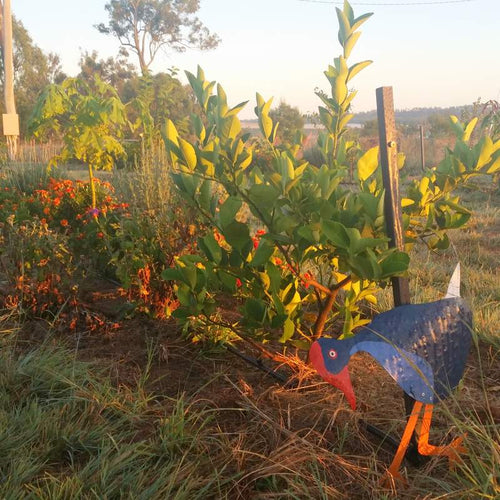Permaculture - Creatively use and respond to change
In his book Permaculture: Principles and Pathways beyond Sustainability (affiliate link), David Holmgren, one of the founders of permaculture, has written about 12 design principles. The twelth permaculture principle is Creatively use and respond to change. In this post I summarise this chapter and give examples from my own experience.
| a stream at Fox Glacier, lots of change happening there! |
Valuing and responding to change
This principle is about anticipating and working with change, generating change for positive results and adapting to change that we can't control. It seems like change is the only constant and the more you can be comfortable with that and even value and use change, the easier life will be.
The most obvious example of the first aspect is using succession to create a productive food forest. Using nurse plants to shelter young trees, planting productive annuals to obtain a yield early, while the perennials grow and generally planning for how the forest will develop over time. There is also the aspect of working with nature and not against it. For example, we are more and more convinced that we want to develop perennial pasture on our property rather than fight against the weeds in a forage crop.
Generating change through disturbance
In terms of generating change, the first example I think of is "disturbance" created by Joel Salatin's mob-stocking and clearing areas of forest, and this is something we really want to try. Outside of farming, my recent change of job is about creating diversity in our income (so we don't both work at the same place) and resilience (which is all about the ability to cope with change).
Adapting to change
Change that we can't control would include climate change and declining fossil fuel availability. This is the change that we need to be able to adapt to, and I particularly liked what David wrote about patterns of traditional life being important for our ability to adapt, if we are focused on our home and our own food production systems, a change in the availability of goods won't be such a shock. I also think that the books of Jarrod Diamond, particularly Collapse: How Societies Choose to Fail or Succeed (affiliate link), add some context about how other societies have (unfortunately) failed to adapt to change.
How do you creatively use and respond to change at your place?
Find out more about Permaculture using these books (affiliate links):
And the other posts in this series:




















Leave a comment